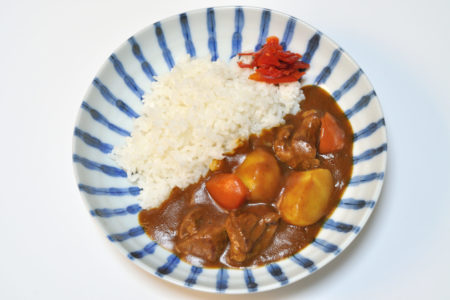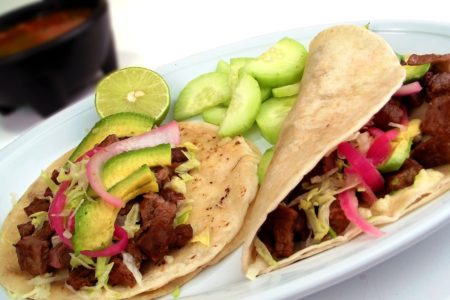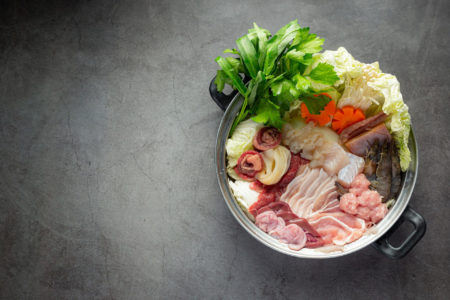The Newbie’s Guide to Eating in Japan

CONTENTS
Top Image: “Yoshinoya Beef Bowl, regular size” by Ocdp uploaded to Wikipedia. This file is made available under the Creative Commons CC0 1.0 Universal Public Domain Dedication
Japan is home to some of the greatest food in the world. People travel from all over to taste this expertly-prepared food. For some, cooking is not just a job, it is a lifestyle; Japan is no different. Chefs have spent decades perfecting their craft. It is no surprise that Tokyo has more Michelin star restaurants than anywhere else in the world.
Today, we will not be talking about those places.
You should definitely try Japanese high cuisine whenever you get a chance. But we all know plenty of people who still intimated by Japanese food, no matter the price tag. I have had many people visit me who are terrified to eat anything they do not recognize. Besides, there is still a language barrier between us and many of the best local restaurants.
And even for adventurous professionals, there is still the small issue of cost. I have eaten at some of the best restaurants in the country, but I have also dropped over ¥10,000 yen for a single dinner at those places. So let’s look at a few places which are simple, easy, and cheap to eat at. And, most importantly, are a great way to ease one into the world of Japanese cuisine.
Familiar Tastes in a New Place
Imported Fast Food Franchises
When I first moved to Japan, I did not touch McDonald’s for a whole two years. I had plenty of them in America; I did not need them here. But I now realize I was missing out. McDonald’s – or マク as they are known in Kanto (seriously, you will get some confused looks if you call them anything else- except Kansai, where it’s マクド) – are pretty much identical all around the world. Although the fries definitely taste better here!
It’s a great place to take people who are still nervous about Japanese food. It also has another huge benefit… free WiFi! You will soon discover how much of a luxury WiFi is throughout Japan. If you go there after five pm, grab a potenage (French fries and McNuggets) for only ¥500 and do some online work.
If the golden arches aren’t to your liking, you can also find Burger King in Japan. Like their arch-nemesis, they have a variety of limited-time special burgers (usually once a month). They’re also a decent choice if you’re looking for a plant-based burger. Kentucky Fried Chicken has a strong presence, as does Wendy’s- although you may find the latter a little different then the US version. And there’s Pizza Hut and Domino’s, although they too have a wider variety of toppings (and higher prices) than what you may be used to.
HUB
Do you want to grab a few beers? Unfortunately, that could be a bit harder than you think. Many bars have a steep cover cost or table charges, and some are essentially an exclusive club to their best patrons. It’s faster and cheaper to drink in the comfort of your own home than out on the town. But there is a chain of British pubs called “HUB” (as well as similar chains outside of Tokyo) which won’t have those aforementioned problems.
Walk in, buy a drink and some food at the counter, and don’t be afraid to talk to the other people there. It’s a well-known fact that every Hub in Tokyo will have several ex-pats parked at the tables at nearly all times.
Branching Out with Foods You Know
Sushi
Sushi is probably the first thing many people think of at the mere mention of Japan. Everyone needs to try the sushi. You could eat at Jiro’s Sushi in Ginza (¥45,000 a plate with a required 90+ day advanced reservation) or you could go to a place like Kurazushi or Sushiro where just about everything is ¥100. These are really cute places where the sushi gets sent around on a little conveyor belt (回転ずし or kaiten-zushi).
Just grab one as it passes by (or better yet, order a fresh one off the included tablet) and at the end you pay based on the number of dishes you have. Don’t like fish? No problem. Most stores would also have nice selections of things like mini hamburgers or barbecue pork on rice. Since everything is so cheap, feel free to try something new. Just avoid them on a Friday evening when they are raided by students.
Ramen
Now here is the true heart and soul of Japanese food. You could write entire encyclopedias about the different types of ramen and not even touch the surface. Most places are locally-owned mom and pop shops, but don’t let that scare you away. Everyone needs to try the ramen, and it should always be the next step when venturing out into more foods. So just find a place and walk in.
Since the chef needs to always be behind the counter, these places usually have little vending machines for food tickets. Pay first, hand the ticket to the chef, and enjoy the atmosphere. If you aren’t sure what to eat, Japanese restaurants love to have food rankings listed at the very front. You can never go wrong with #1.
Saizeriya
This is my personal choice for a cheap and tasty eat. Saizeriya is what they call a family restaurant, a cheaper eatery where busy families, cramming students, and couples on their first date will often spend hours at a time.
Saizeriya specializes in Italian food, but their menu is massive. Pasta? Pizza? Salad? Steak? Wine? Escargot? They have it for about as cheap as possible. It’s a delicious place with plenty of variety.
And, most importantly, they have a Drink Bar.
Now Let’s Get Experimental
Supermarkets
Even for the people who don’t know how to cook (the author cautiously raises their hand) there’s still plenty to eat at supermarkets. They will often have a prepared lunchbox, called a bento box, with a little bit of everything. I also highly recommend getting some fresh tonkatsu or tempura from the deli.
Most will even have microwaves (a レンジ or “range” in Japan) and sometimes a few tables to eat at right there. What’s even better is they will often have flash sales, usually closer to closing time, as well as a discount day in the middle of the week. And yes, most supermarkets do have a closing time here. Thankfully convenience stores are all open 24/7, and they will have a great assortment of bento boxes and even fresh fruit and vegetables too. Just be prepared to pay a little more.
Japanese Fast Food Chains
Here’s a few more great, cheap, and easy places.
Go-Go Curry: Award-winning best curry in Japan for several years running. Look for the iconic gorilla logo. The style of curry served here is Kanazawa-style, which is thicker than the more conventional kind. Make sure you come hungry, especially if you plan on getting anything larger than the smallest plate size. Seen here is the “Grand Slam” major curry. The massive “World Champion Curry” is limited per day, and large enough that it may qualify for its own postal code.
MOS Burger: Tired of McDonald’s and BK? Japan’s homegrown burger chain offers a higher class of fast food joint with Sloppy Joe-style burgers. If even that’s not enough for you, there’s Freshness Burger. The MUSUBI Editor will argue that one is not just the greatest burger chain in Japan, but on the planet.
The Lightning Round
Hidakaya: Instantly recognizable kanji (日高屋, but much more balloony) and a great gyoza set.
Gusto: Another popular family restaurant with a phone book sized-menu. We definitely recommend the “cheese in hamburger”.
Sukiya: The ultimate Japanese-style fast food: gyudon. Lots of meat on top of rice. Open 24 hours and about as cheap you’ll ever find good food.
Pepper Lunch: The first meal I ever ate in Japan. Steak and rice you cook in the hot plate at your table. For a slightly fancier version of the Japanese steakhouse, there’s Ikinari Steak.
These are just some of the many places to fill your stomach in Japan. Definitely do be adventurous and keep trying new kinds of food. But if you are in a hurry, on a budget, or still a little nervous, you can’t go wrong with any of these places.
Photo Credits:
Top Image: “Yoshinoya Beef Bowl, regular size” by Ocdp uploaded to Wikipedia. This file is made available under the Creative Commons CC0 1.0 Universal Public Domain Dedication The person who associated a work with this deed has dedicated the work to the public domain by waiving all of their rights to the work worldwide under copyright law, including all related and neighboring rights, to the extent allowed by law. You can copy, modify, distribute and perform the work, even for commercial purposes, all without asking permission. Wikimedia Commons Link
All other content (text) created by the original author and © 2022 MUSUBI by Borderlink
RELATED
-

Delicious Curry on the Cheap
Top Photo: Ocdp used under the Creative Commons CC0 1.0 Universal Public Domain Dedication. Wikimedia Commons … -

Good Eats: The Taco Hunt
Top Image: adoproducciones on Pixabay This may sound strange to say, but I come from Southern California where… -

Stay Warm with these Hot Pot Dishes!
Top Image: Protein photo created by jcomp – www.freepik.com During this time of year, you’re bravi…
PEOPLE

Jeff Browning
An English teacher from America who has been living in Japan for ten years now, Jeff has never once gone to sleep hungry since moving here!


